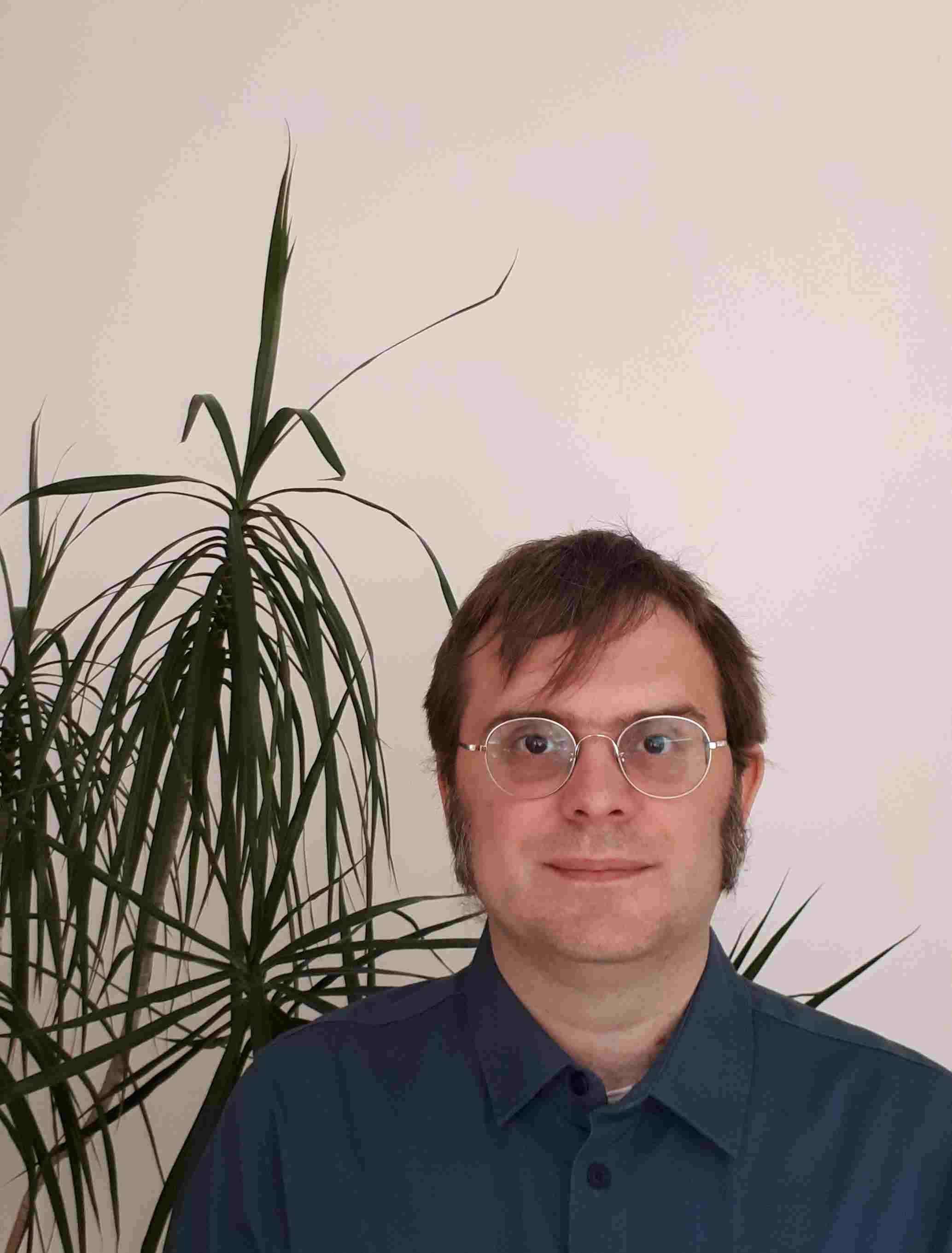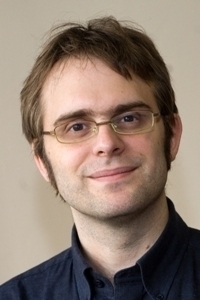Staff profile
Professor Simon Mills
Professor of Ethnomusicology

| Affiliation | Telephone |
|---|---|
| Professor of Ethnomusicology in the Department of Music | +44 (0) 191 33 43152 |
Biography

Simon Mills is an ethnomusicologist specialising in Korean music, music’s roles in ritual and healing contexts, systems of musical representation (terminology and notation systems), musical analysis (especially of rhythm), performance theory, and musical instruments and their classification. His main area of expertise is Korean shaman music, which he has researched extensively in the field, working with both charismatic and non-charismatic ritualists. South Korea’s East Coast hereditary shamans are the topic of his book Healing Rhythms (Ashgate 2007).
Other publications by Dr. Mills include various articles about Korean shaman ritual music, several articles exploring other facets of Korean music (in particular, techno-culture and globalisation), and two edited volumes (for the journals Musike and Mortality). He is currently active as a member of the British Forum for Ethnomusicology, and regularly presents papers at their conferences. In 2010-2011, he worked with Dr. Sung-Hee Park on a project studying the musical life on the remote Korean island of Ulleungdo, funded by the AKS (Academy of Korean Studies). From 2013-14, he conducted another AKS-funded project together with Dr Park, researching the formation and expression of personal style in Korean shaman music. And from 2019-2020, the two co-researchers conducted a third AKS-funded project exploring the chanting practices fostered by monks within the Chogye Buddhist sect.
As a keen adherent of the ‘bi-musicality’ approach to ethnomusicology – acquiring knowledge of another’s music through practical learning – Simon Mills has devoted much time to learning, teaching, and performing Korean music, in particular the hourglass drum (changgo), hand gong (kkwaenggwari), and end-blown bamboo flute (tanso), He is a keen member of the Durham Gamelan Group, which has performed in the Sage (Gateshead), Carlisle Cathedral, and many other venues.
Research interests
- Korean traditional music (especially shaman ritual music)
- Musical instruments
- Shamanism and music's role in healing practices
- Systems of musical representation (terminology and notation)
- Transcription and analysis
Publications
Authored book
- Healing Rhythms: the World of Korea's East Coast Hereditary Shamans (including CD)Mills, S. R. (2007). Healing Rhythms: the World of Korea’s East Coast Hereditary Shamans (including CD). Ashgate Publishing.
Chapter in book
- The Durham Oriental Music Festival and Chinese MusicMills, S., & Pratt, K. (2019). The Durham Oriental Music Festival and Chinese Music. In Y. Hui & S. Wild (Eds.), Global perspectives of ethnomusicologicals in the Internet Age. (pp. 250-305). Zhejiang University Press.
- Life beyond Ritual? Preserving the Shamanic Performance Arts in South Korea TodayMills, S. R. (2018). Life beyond Ritual? Preserving the Shamanic Performance Arts in South Korea Today. In B. Norton & N. Matsumoto (Eds.), Music as heritage : historical and ethnographic perspectives. (pp. 105-128). Routledge.
- Music in Korean Shaman RitualMills, S. (2017). Music in Korean Shaman Ritual. In H. Curti (Ed.), Eolssigu! the sounds of Korea. (pp. 86-103). Ajuntament de Barcelona.
- 'Local Heroes': Re-establishing Drums and Gongs in Ulleungdo’s Musical LifeMills, S. (2014). ’Local Heroes’: Re-establishing Drums and Gongs in Ulleungdo’s Musical Life. In T. P. C. for the C. R. C. for P. H. Chunyŏn (Ed.), Han’guk ŭmakhak-ŭi chip’yŏng : Hwang Chunyŏn kyosu chŏngnyŏn t’woeim kinyŏm = Musicology in Korea : a commemorative retirement collection for Professor Hwang Chunyŏn. (pp. 419-430). Minsokwon.
- A Tune with Many Faces: European Interpretations of ArirangMills, S. R. (2013). A Tune with Many Faces: European Interpretations of Arirang. In D. Sheen (Ed.), Arirang in Korean culture and beyond : Arirang from diverse perspectives. (pp. 257-274). Academy of Korean Studies Press.
- Music in Korean Shaman RitualMills, S. R. (2012). Music in Korean Shaman Ritual. In H. Um & H. Lee (Eds.), Rediscovering traditional Korean performing arts. (pp. 39-45). Korea Arts Management Service.
- Tokkaekki Changdan : a musical goblin in east coast shaman ritual?Mills, S. R. (2008). Tokkaekki Changdan : a musical goblin in east coast shaman ritual? In Mandan Yi Hyegu Paksa Paeksu Kinyom Nonmunjip : a collection of essays to commemorate the 100th Birthday of Scholar Yi Hyegu. Minsokwon.
Edited book
- Analysing East Asian Music, Musike vol. IIMills, S. (Ed.). (2010). Analysing East Asian Music, Musike vol. II. Semar.
- Musical Terms Worldwide: A Companion for the Musical ExplorerMills, S. R., van Amstel, P., & Markovic, A. (Eds.). (2006). Musical Terms Worldwide: A Companion for the Musical Explorer. Semar.
Journal Article
- Everyday Temple Chant in South Korean Chogye Sect Buddhism: An Analytical Study of the Personal Styles Cultivated by MonksMills, S., & Park, S. (2022). Everyday Temple Chant in South Korean Chogye Sect Buddhism: An Analytical Study of the Personal Styles Cultivated by Monks. Analytical Approaches to World Music Journal, 10(1), 1-68.
- "Release Hitting": An Analytical Study Commemorating the Artistry of the South Korean Shaman Musician Kim Yongt'aekMills, S. (2020). "Release Hitting": An Analytical Study Commemorating the Artistry of the South Korean Shaman Musician Kim Yongt’aek. Analytical Approaches to World Music, 8(1), 1-47.
- Memories of The Last Hwaraengi, Kim JungheeMills, S. (2020). Memories of The Last Hwaraengi, Kim Junghee. Han’guk ŭmak Yŏn’gu., 67, 279-320. https://doi.org/10.35983/sikm.2020.67.279
- The Durham Oriental Music Festival and its LegacyMills, S., & Pratt, K. (2017). The Durham Oriental Music Festival and its Legacy. Asian Musicology, 27, 137-178.
- The Musical Faces of South Korea’s East Coast Shaman Tradition: An Exploration into Personal Style Formation and ExpressionMills, S. R., & Park, S. (2017). The Musical Faces of South Korea’s East Coast Shaman Tradition: An Exploration into Personal Style Formation and Expression. Ethnomusicology Forum, 26(1), 69-92. https://doi.org/10.1080/17411912.2017.1305283
- A Mysterious Island in the Digital Age: Technology and Musical Life in Ulleungdo, South KoreaMills, S. R., & Park, S. (2013). A Mysterious Island in the Digital Age: Technology and Musical Life in Ulleungdo, South Korea. Ethnomusicology Forum, 22(2), 160-187. https://doi.org/10.1080/17411912.2012.713774
- Sounds to soothe the soul: music and bereavement in a traditional South Korean death ritualMills, S. R. (2012). Sounds to soothe the soul: music and bereavement in a traditional South Korean death ritual. Mortality, 17(2), 145-157. https://doi.org/10.1080/13576275.2012.675231
- Music and Death: IntroductionMills, S. R. (2012). Music and Death: Introduction. Mortality, 17(2), 89-91. https://doi.org/10.1080/13576275.2012.682412
- The Tale of the Three Young Brothers: an Analytical Study of Music and Communal Joy (hŭng) in Korean Folk CultureMills, S. R. (2011). The Tale of the Three Young Brothers: an Analytical Study of Music and Communal Joy (hŭng) in Korean Folk Culture. Music Analysis, 29(1-3), 276-305. https://doi.org/10.1111/j.1468-2249.2011.00332.x
- Playful Patterns of Freedom: Hand Gong Performance in Korean Shaman RitualMills, S. R. (2010). Playful Patterns of Freedom: Hand Gong Performance in Korean Shaman Ritual. Musike. International Journal of Ethnomusicological Studies, 145-170.
Other (Print)
- Arirang in Europe: A Melody with Many Faces (Online essay)Mills, S. R. (2012). Arirang in Europe: A Melody with Many Faces (Online essay). Story of Korea (Online resource).

